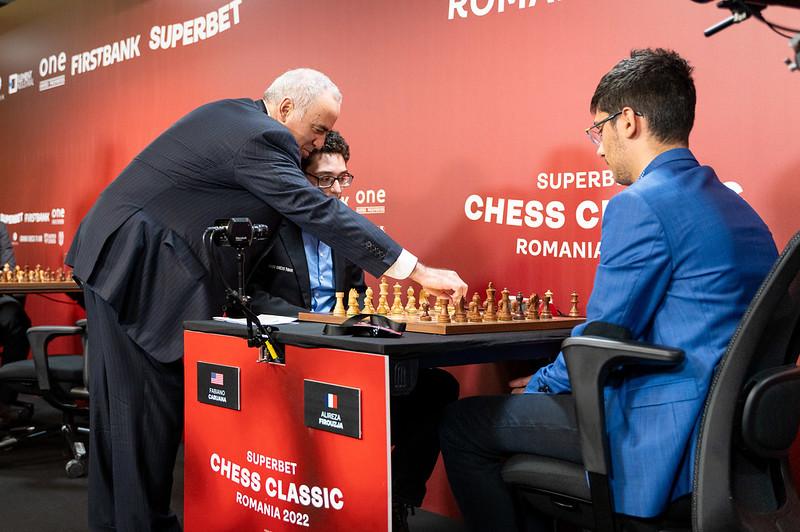
Wesley So Wins And Leads: 2022 Superbet Chess Classic Romania, Day 1
The first round of this year's edition of the Superbet Chess Classic in Bucharest, Romania saw only one win. GM Wesley So defeated GM Shakhriyar Mamedyarov in a nice positional game, while the other four games ended in draws after varying amounts of battle and tension.
Round two will begin on Friday, May 6, at 5:00 PT / 14:00 Central Europe.
How to watch?
You can follow the 2022 Grand Chess Tour with Chess.com commentary on Chess.com/TV or on our Twitch channel. You can also catch all our live broadcasts on YouTube.com/ChesscomLive.
Follow the 2022 Superbet Chess Classic Romania games live on our dedicated page on Chess.com/events.
The lineup for this year's tournament showed an impressive number of former world number twos: GMs Fabiano Caruana, Alireza Firouzja, Levon Aronian, Shakhriyar Mamedyarov, Wesley So, and Maxime Vachier Lagrave. The rest of the field consists of the most recent world championship challenger GM Ian Nepomniachtchi, world number five GM Richard Rapport, World number 12 GM Leinier Dominguez, and finally Romanian number one Bogdan-Daniel Deac. Besides the two top-ranked players in the world, you really cannot ask for much more in terms of talent.
Whether you are a beginner or a professional, there is always a bit of nervous tension at the beginning of an event. Of course, you would like to start with a victory, but you also do not want to commence your tournament with a loss, particularly in a relatively short event like this one.
Whether it was nerves, tension, jetlag, or something entirely different, we had a big share of relatively quick, but not altogether uninteresting, draws.
The first game to finish was between the sole Russian in the field, Nepomniachtchi, who played local hero Deac. Facing the Petroff, Nepomniachtchi chose a line where his primary experience seemed to have been with Black, unsurprisingly as that was his preparation in the match against Carlsen. On move nine, he went in a different direction than his previous games, preferring 9.Qh5 to 9.0-0. There are some transpositional opportunities, but Black did not acquiesce, meeting White's sharp move with the somewhat provocative 9...g6.
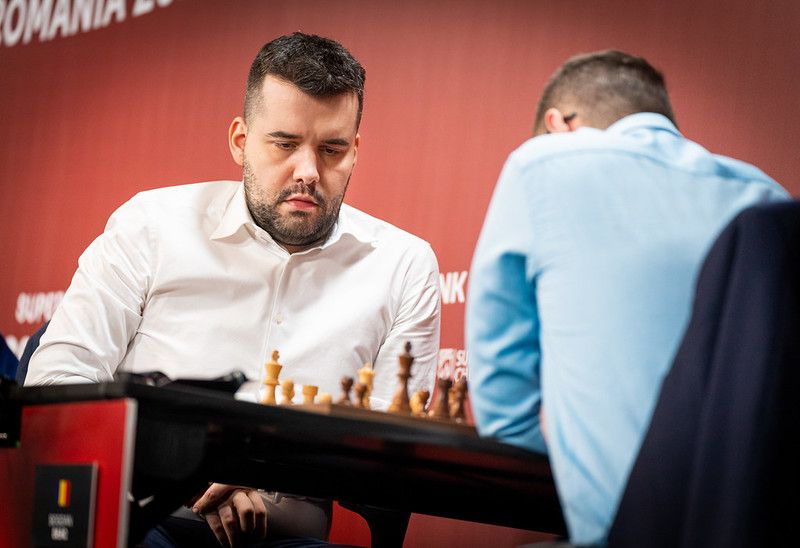
With mutual help, the players soon exited previously known praxis, which mostly consisted of top-level email games. White had some opportunities for an advantage, but they mostly seemed fleeting or of little consequence, and eventually, the game was drawn by a repetition of moves.
Asked if he was dissatisfied with the result, Nepomniachtchi characteristically opined that everybody in the field expect Deac to soon be over 2700, so a draw was a fairly normal result.
It would be fair to say that one of the most awaited games of the round was the encounter between the 2018 World Championship challenger and recent American Cup winner, Caruana, and Firouzja, who aside from the World Blitz and Rapid in Warsaw in December, had not played since crossing the 2800-barrier in classical chess last year.
With the white pieces, Caruana has been playing a little of everything recently, so it was difficult to count on anything in particular, but Firouzja nevertheless seemed well-prepared in a rather obscure sideline of the Queen's Gambit Exchange Variation.
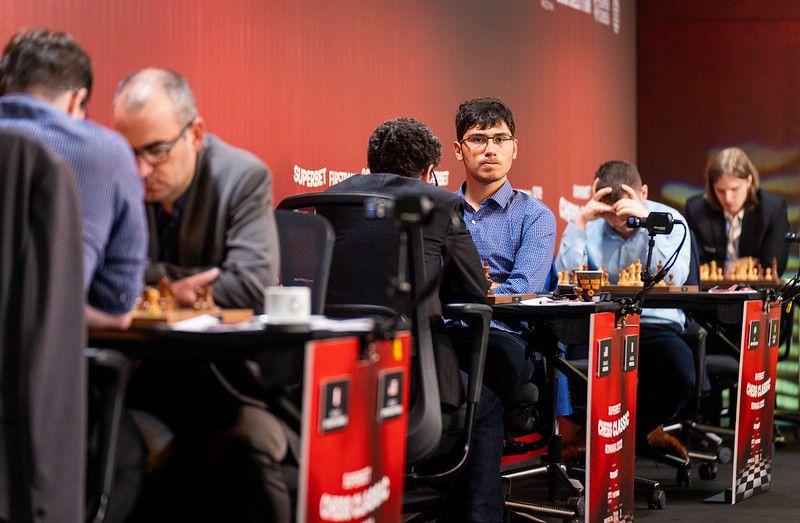
By sheer coincidence, Caruana's choice of 11.a4!? and 14.Ra3, which never had been played prior to today, was also seen in a game between GMs Jorden van Foreest and Michael Adams in the Sigeman tournament in Malmo, Sweden today.
These two games were played today, in different tournaments, in different countries. You figure it out. 🤷 😬@tepesigeman #GrandChessTour #SuperbetChessClassic pic.twitter.com/74AsJCXsU1
— ChesscomLive (@ChesscomLive) May 5, 2022
When questioned about this after the game, Firouzja said "11.a4 is the engine's first choice" and made it apparent that he had looked at it. White nevertheless seemed to obtain a small plus, but was unable to produce anything concrete on the board. However, just before the players started repeating moves, White had an opportunity for more, but given his clock situation, Caruana did not see it reasonable to gamble and invited a repetition, to which Firouzja happily agreed.
Unlike Aronian, Hungarian Rapport is playing in the FIDE Candidates Tournament in Madrid in June, yet he still found time to play in both this event and the upcoming Norway Chess tournament, which starts at the end of May. When questioned about his decision to play all of these events in a row, Rapport explained that he had not expected to qualify for the Candidates (he did so through his results in the first two legs of the FIDE Grand Prix). Now he would not let anybody down, even though his disappointment with the Hungarian Chess Federation clearly shone through his post-game interview.
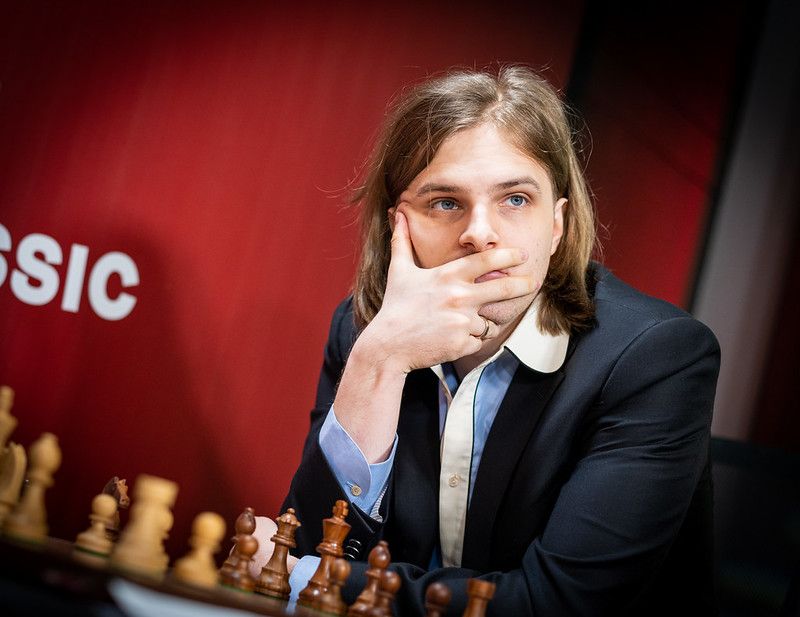
For his game with the black pieces against Aronian, Rapport chose a curious line in the Slav Defense, and to say that Chess.com commentators GMs Irina Krush and Daniel Naroditsky were unimpressed was an understatement. It frankly looked ridiculous. However, Rapport demonstrated quickly that he navigates these somewhat absurd-looking positions exceptionally well. After a well-timed 15...Be8!? followed by 16...f5!, his pieces, like a leaf on a tree that finally got the right amount of sunshine and warmth, sprung to life, putting pressure on Aronian to hold the balance.
While it seemed clear that it was Rapport applying the pressure, the position was always about balanced, and shortly before the time control, the players found a way to repeat moves and settle for a draw.
French grandmaster Vachier-Lagrave is one of the most principled top players in terms of opening choices, having a fairly predictable but well-worked-through repertoire in most openings. This made it all the more surprising that he chose the bizarre-looking 4.Nd3 against Dominguez's Petroff, the opening with which he had such success in the American Cup. That being said, 4.Nd3 was played by World Champion Magnus Carlsen in his match against Nepomniachtchi last year in Dubai.
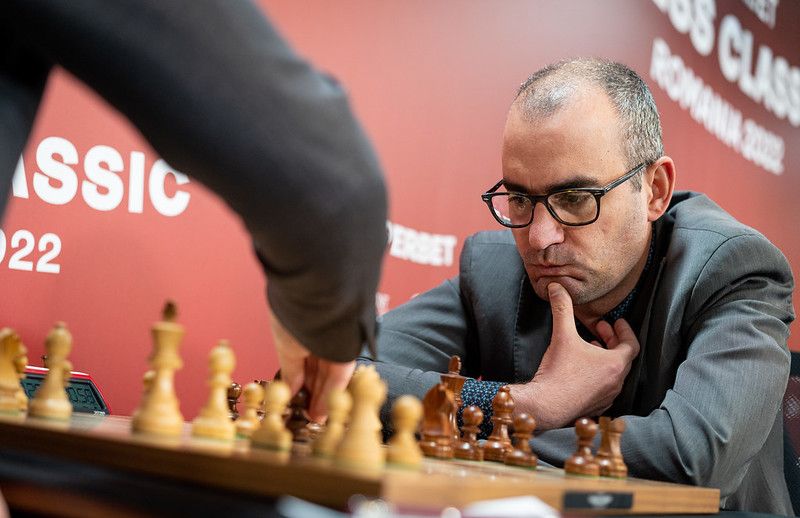
It seemed like Dominguez was better prepared than his opponent and equalized fairly smoothly out of the opening. However, when he handed White the bishop pair with 16...Nh4, it was as if White gained the upper hand, even if not by much. With the queens off the board, only one open file, and symmetrical pawn distribution, it takes more than a little advantage to win against a world-class player such as Dominguez. While Vachier-Lagrave tried for a while, and Dominguez was down to less than a minute for the last five moves before the time control, the evaluation bar on the commentators' screen never rocked from the middle.
The last game to finish today's round was the sole decisive game. Wesley So played the white pieces against last year's winner of the Superbet Chess Classic, Mamedyarov. Against the Azeri GM's Nimzo-Indian, So chose to use a line that he had played in the American Cup against GM Sam Sevian, a game he had lost but clearly thought that he could improve upon. The line had also been used in the game between Rapport and Vidit in the FIDE Grand Prix in Belgrade a couple of months ago.
Mamedyarov chose, possibly unaware, to diverge from the Rapport-Vidit game by playing 12...Bf4?!, which seems to offer White a smaller but clear advantage.
In the middlegame, So seemed able to build on the advantage by accepting that Black got two connected passed pawns in the center, but was saddled with a lousy bishop on b7 as well as some serious structural issues on the dark squares.
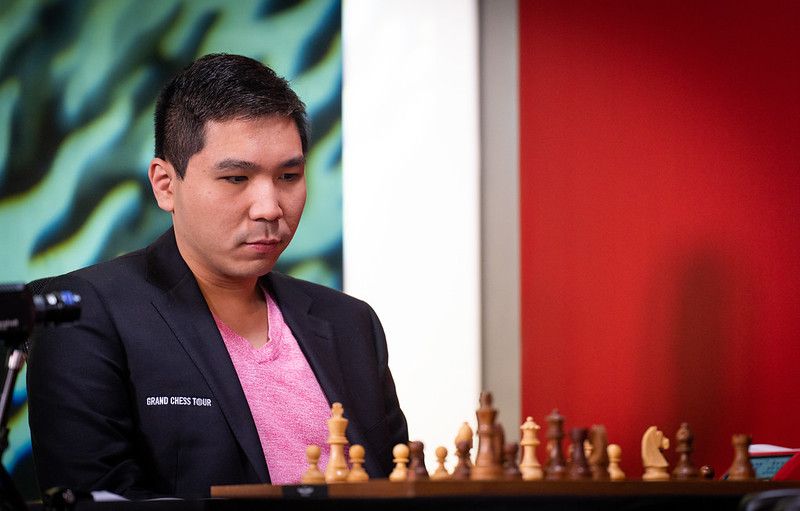
However, when both sets of rooks were exchanged, leaving the players with queens and opposite-colored bishops, it was far from clear how White would break through Black's defensive ranks. Whether it was a case of carelessness or lack of time on Mamedyarov's part is not entirely clear, but suddenly White was able to find a way to Black's king. So speculated after the game that maybe Mamedyarov had missed that he would get mated when White's queen got g8.
Round 1 Standings
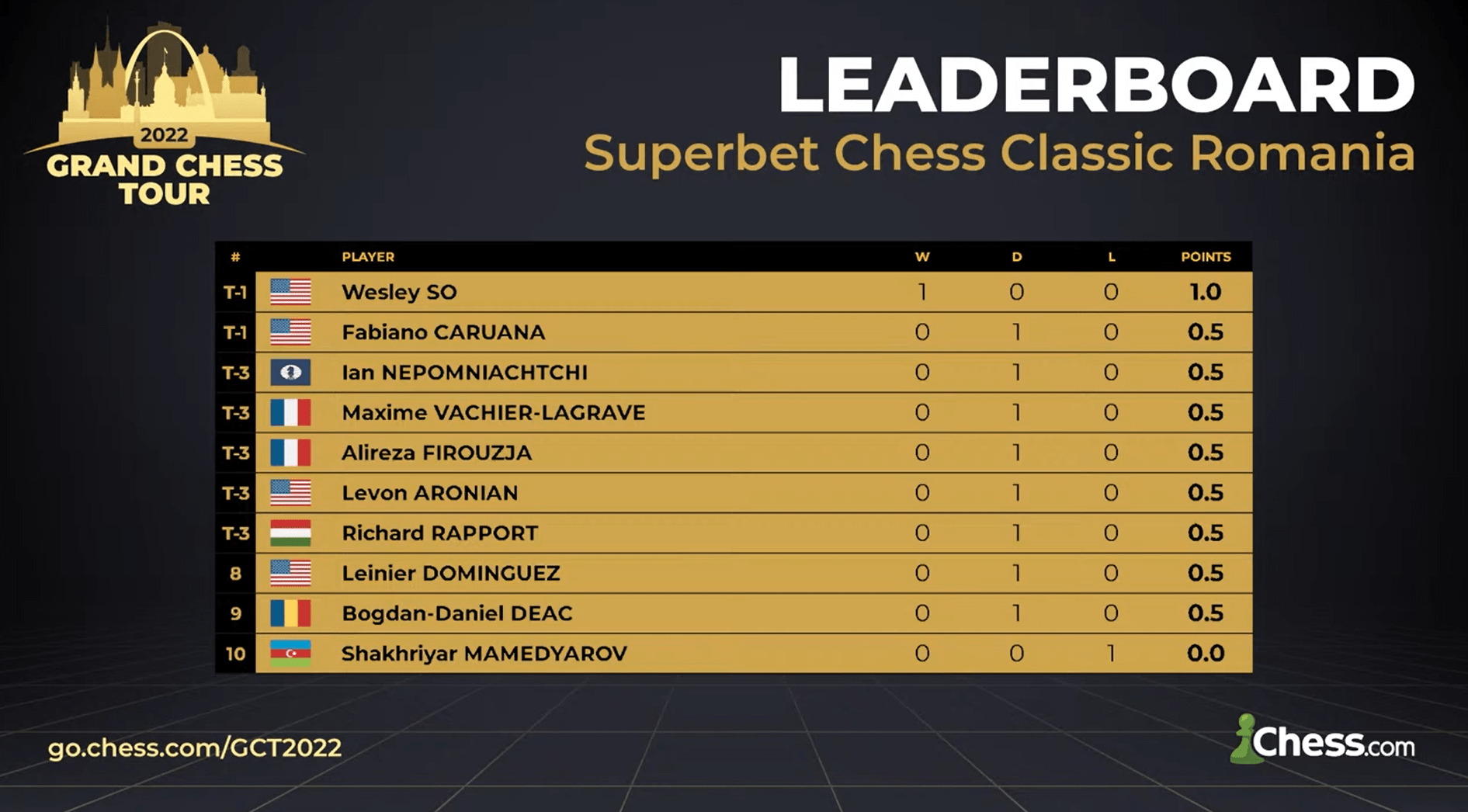
All Games Round 1
Previous coverage:


